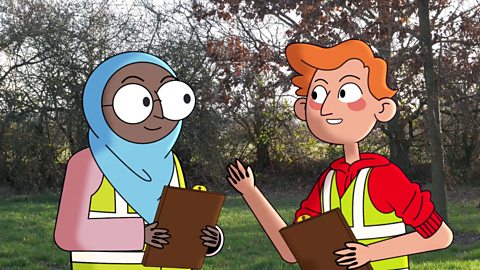Beginning your investigation
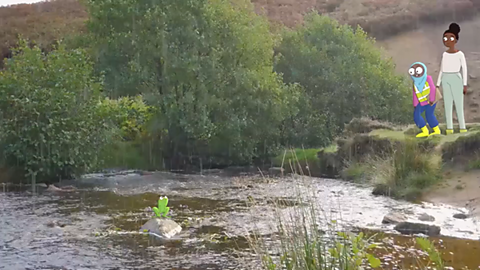
When you carry out your fieldwork investigation, you need to:
- be prepared.
- remember how to stay safe.
- remember your plans, but be ready to change them if you need to.
- record your findings carefully.

How should you carry out your investigation?
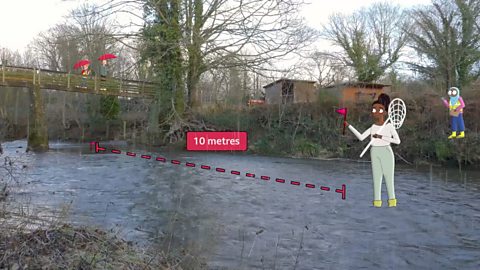
After you have researched and planned your fieldwork, it’s time to carry it out.
Here are some tips:
- remember to take all the tools and equipment you will need.
- keep in mind the plan you have made, but be prepared to change or adapt it in case something unexpected happens.
- make sure you wear sensible footwear and clothes, stay visible by wearing something bright and be prepared in case the weather is cold or wet.
- whilst carrying out your fieldwork, you need to take photographs or make labelled sketches of the place. This will help you remember what you have seen.

Watch: Rivers fieldwork investigation
Play the video to see how Ayesha and James carry out their investigation at the river.
Ayesha: Look, it's raining. I'm glad I brought my coat.
James: Yeah, it's great…
Ayesha: We're going to have to be really careful. The rocks near the river look wet and very slippery. Make sure you stay away from the edge.
James: Oops! Yeah, we'll need to be really careful.
Ayesha: Woop.I'd like to do some drawing but it's raining so hard that I think it's going to be difficult. I'll take a photo instead and add the physical features afterwards.
James: I've got a tablet to take photos with, but I don't want to get it wet.
Ayesha: There are some trees over there, we can shelter under them.
James: I'll ask Miss if it's OK.
Teacher: That's fine, but stay where we can see you, OK?
Ayesha: Thanks, Miss.
James: Make sure you get the landscape in. Can you see the curve of the river?
Ayesha: Yep!
James: We can note the features on the photo using the tablet.I've borrowed an umbrella.
Ayesha: Great! Now I can draw in the physical and human features.
James: We should measure how fast the river flows.
Ayesha: OK, I'll measure ten metres.
James: I'll drop the orange and then you time how long it takes to travel ten metres. Ready?
Ayesha: Yep!
James: Go!
Ayesha: Let's do it three times, then we'll work out the average time.I think we've got everything!
James: Oof! Great… That's great…
Take a look at some more tips for your investigation:

Image caption, Before you leave for fieldwork, make sure you pack all the equipment you will need.
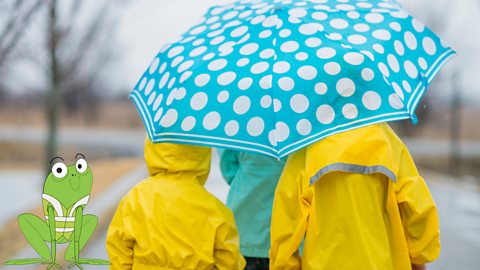
Image caption, Waterproof clothing can keep you dry during investigations and bright colours will help adults know where you are.
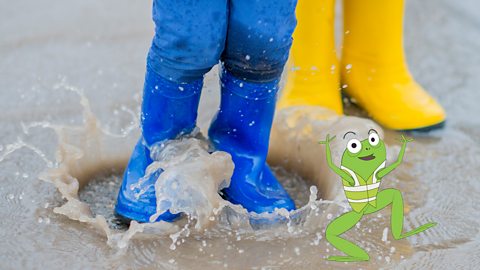
Image caption, Wellington boots are useful during river investigations.
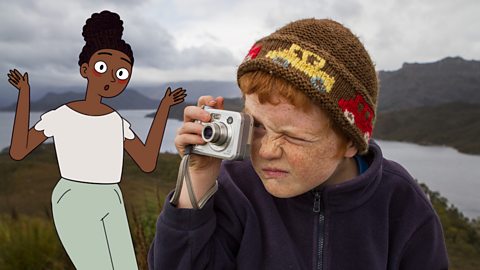
Image caption, Findings can be photographed and labelled later.

Image caption, You can record your observations using tablets.
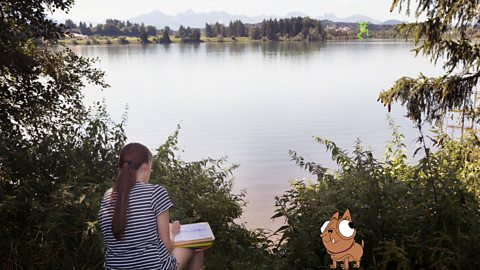
Image caption, Draw and label the human and physical features you observe.
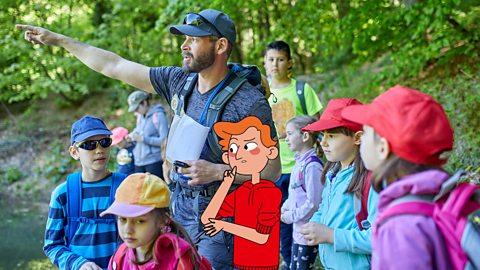
Image caption, Listen carefully to the adult who is looking after you.
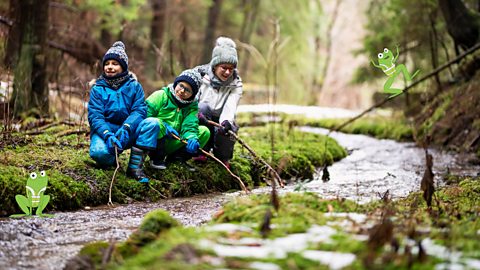
Image caption, Staying safe is very important, especially near water.
1 of 8
Watch: Wetlands fieldwork
Learn about fieldwork at a nature reserve in this BBC Teach video.
De-Graft: This is the Red Moss of Balerno reserve where I’m exploring what are known as wetlands. Locals and tourists come here for walks and to take in the scenery, and the birds love it too… Ooh I’ve spotted some!
Wetlands such as swamps, marshes, or bogs, are areas where the ground is saturated, or full of water, and doesn’t drain properly.
Bogs mainly consist of a plant called moss. Later locals Aarya and William are going to be getting a close up look at the moss here with me. But first, let’s zoom out.
The Red Moss of Balerno reserve is in the Lothians in Scotland, just south of the country’s capital city, Edinburgh. 60% of the UK’s bogs or peatland is in Scotland, a lot of which is in the very north, or the Highlands, of Scotland.
The Red Moss of Balerno is one of only twenty raised peat bogs still surviving in this part of Scotland called the Lothians. The ground is wet and uneven so peatland reserves have created boardwalks like this to provide access.
Bogs form in cool places with plenty of rain. Moss is able to grow in low mineral conditions, it doesn’t rot away but builds up to form deep layers which is called peat. Bogs like this one have been growing for thousands of years, with the layers of peat growing just millimetres per year to now make up a bog that’s several metres deep.
Peatlands are an important habitat and home to a lot of wildlife including rare species of water birds and incredible little insects such as jewel beetles, dragonflies and heath butterflies.
Peatland is really important for our planet: It helps prevent flooding by absorbing water from rainfall. It’s a great source of drinking water and it locks in carbon and keeps it from damaging the environment.
Aarya and William are with me at the reserve helping to investigate a bit more. We’re using magnifying glasses to zoom in and look at the moss.
We’ve got some red moss.
So guys, despite the wet weather, I still think this place looks incredible, what do you two make of it?
William: I think it’s just magnificent.
Aarya: All the nature looks really pretty.
De-Graft: Yeah, absolutely and it feels really peaceful out here.
Now we’ve been using our magnifying glasses to see what we can spot out here. What kind of things have you guys found?
Arya: Really pretty pink flowers and they were all around the place.
William: Saw a lot of mushrooms, saw one big one!
De-Graft: Yeah, I spotted that too!
Now sadly in the past, and in some places today, peatlands are destroyed and burned to make room for housing and trees. But when this happens a greenhouse gas called carbon dioxide is released into the atmosphere. That carbon dioxide has been locked away in the moss for thousands of years, but when it’s released it can be very harmful to the environment. Alright, big question for you guys, have you got any ideas about how we can protect peatland areas like this?
Aarya: Maybe not walking on the plants. You could look around and not destroying it and keeping it clean.
William: Raise awareness and put banners or posters around to keep the peatlands safe.
De-Graft: Yeah, that’s great!
OK, time to compare… One of the best examples of peatland in the UK is an area of blanket bog called The Flow Country in the very north of Scotland. It’s 4,000 kilometres squared. If you put the UK capital cities - London, Edinburgh, Cardiff, and Belfast - all together, they would cover an area only half the size of the Flow Country.
So we’ve found some really interesting types of moss here but moss doesn’t just grow in nature reserves and bogs, it can be found all over the UK. So why not try to find some near where you live. Zoom in and have a look for yourself.
Come on then, let’s go explore some more.
Activity: Quiz – Carrying out fieldwork
SATs preparation resources. activitySATs preparation resources
Get ready for the SATs papers with videos, activities, quizzes and games to refresh your knowledge and practise your skills.

More on Fieldwork
Find out more by working through a topic
- count7 of 12
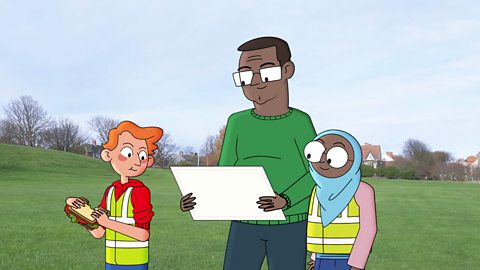
- count8 of 12
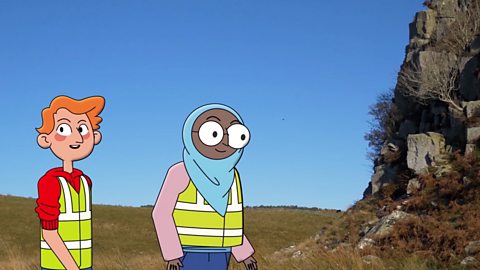
- count9 of 12
